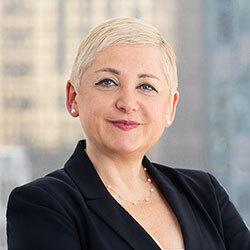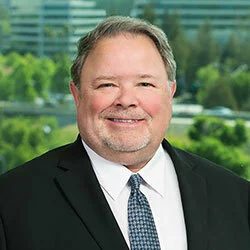As trial lawyers, it has become increasingly clear to us that these days jurors have unrealistically high expectations about product safety and corporate safety standards. They believe that if a product has the ability to hurt someone, it is defective and that if it is going to be on the market, it needs to be 100% safe. But why is this the case?
The answer lies in the societal trend of "safetyism," which has been slowly emerging over the past few decades. With technological and medical advances, humans are safer now than ever before and people's belief that they should be absolutely free from the risk of harm or discomfort has also risen. This has led to a pervasive avoidance not just of physical harm but also of emotional discomfort.
As such, we have developed the means by which to minimize exposure to emotional distress, including cable news networks, internet sites or social media accounts where we can tune into what we want to hear and avoid what we do not want to hear. With more options for isolating ourselves from opposing viewpoints or facts it is easy to insulate our realities from even the suggestion of a differing opinion. As a result, an opposing statement is now more likely to set off alarm bells and throw the inner armies in motion as they march off to protect core beliefs on the topic. Rage often results in a place where healthy debate could once exist between individuals. This changed dynamic is showing up in how we practice law, formulate legislation, reason as a court and make decisions as jurors.
Impact of Safetyism on Legal Advice
Safetyism is a cultural trend that emphasizes safety and protection over other core values, such as personal responsibility. The term first appeared in a book entitled "The Coddling of the American Mind," by Greg Lukianoff and Johnathan Haidt. It is commonly marked by risk aversion, a need to exert control and a hyperfocus on safety as well as avoiding any harm. In the context of how lawyers practice law, safetyism may come into play in the way lawyers counsel their clients. It may indirectly or directly influence lawyers to employ more risk avoidance in their legal counseling and strategies. This overarching need to avoid controversy, offense or alienation may swing too far and cause lawyers to settle or choose "safer" strategies that may not be in the best interests of their clients.
Impact of Safetyism on Lawmakers
Safetyism may also influence the types and scope of laws and regulations drafted by legislators. Lawmakers may be more apt to push safety above other values, such as economic efficiency or personal responsibility. Overall, the projection of these fears can be found in stricter laws and increased regulations across industries, particularly as pertains to health and safety.
For example, in 1885 New York State enacted the Labor Law aimed at providing people with a safe place to work by charging their employers with the responsibility for maintaining safe work conditions. Section 240(1) of New York State's Labor Law, which has been nicknamed the "Scaffold Law," protects workers from height-related hazards, meaning situations where either the worker falls from a height or an object falls from a height onto the worker. The "Scaffold Law" requires property owners and contractors to provide proper safety equipment to workers performing certain construction related activities which either requires them to work at a height or below a location where material and/or equipment is being used at higher levels. This statute exposes owners and contractors to absolute liability for violations, meaning liability by status alone even if/when the owner or contractor did not actively cause, create or even contribute to the statutory violation (i.e. an out-of-possession owner would be liable for a Section 240(1) violation caused by a contractor or subcontractor on the site of a construction or renovation project undertaken by/on behalf of that owner). The worker's own fault is not a defense unless it is the only cause of the accident or the worker failed to follow contemporaneous instructions to perform the given task in a different, safer manner and/or to use different, safer equipment. However, New York State's "Scaffold Law" has been the subject of controversy and debate, with some arguing that it makes it too easy for workers to file, maintain and even prevail in lawsuits. Indeed, the "Scaffold Law" has raised the cost of insuring and, therefore, performing construction in New York State.
Impact of Safetyism on Courts
Judges are not immune from the influence of safetyism as it may penetrate the courtroom, influence how they interpret laws and apply sanctions. Judges may prioritize safety or risk avoidance over other considerations, such as responsibility for one's own safety, and may levy harsher sanctions than they have in the past, against businesses who violate safety standards. Over the more than 135 years since it was enacted, New York State's "Scaffold Law" has been interpreted and applied by the courts progressively more strictly against property owners and contractors. However, court is supposed to be a place where hard questions are examined and answered with equal, objective application to all litigants on both sides. Many experts feel that safetyism dissuades judges and parties from taking deep dives into controversial issues which most need attention. This phenomenon has had a significant impact on litigation, particularly when it comes to product liability, mass tort, the trucking industry and personal injury matters. There seems to be a litigation trend, dubbed the "Reptile Theory," of using fear and anger to make the jury dislike the defendant for engaging in highly dangerous or unsafe conduct which is worthy of punishment. Along these lines, plaintiffs argue that defendants do not care about their workers' safety and cut corners to save time as well as money. The truth is that many property owners and contractors realize that working safely is, in fact, more efficient and cost effective at the end of a safe workday.
Impact of Safetyism on Jurors
Jurors report that they often feel less in control of their world than ever before. This view can lead them to take the single event or instance underlying the case before them in the courtroom and blame the defendant in that particular case for the sins of all businesses in that industry. Not only must the defendant in this case pay for its own wrongs, if any, but even innocent defendants end up paying the price for the wrongs of others. The broad belief that their verdict will somehow serve the greater good causes jurors to feel more in control of their circumstances and allows them to complete their jury service satisfied that they have done their duty by leaving the world a better place. The jurors may, of course, do so even after charging with liability or fault a defendant who did absolutely nothing wrong vis a vis the accident underlying the case.
Furthermore, when jurors place primary importance on their feelings rather than focusing on the actual facts and evidence presented in the case, they tend to produce highly inflated verdicts based on skepticism and distrust of business. This growing animus among the average American that the corporate world is against them and stealing from them at every turn manifests itself in the courtroom. Too often these beliefs result in nuclear verdicts based on feelings instead of facts.
Summarized below are a few examples of cases in which juries returned nuclear verdicts where safetyism clearly influenced their reasoning and conclusions. The common thread is heinous injury being compensated with millions of dollars. No one disputes that these plaintiffs deserved compensation for the accidents and injuries they suffered but how much is too much? Nuclear verdicts are causing liability explosions across industries and hurting the bottom lines of companies which have never caused or contributed to any safety violations or injuries to their employees or others. Insurance premiums, customer expectations and changing societal norms are shaping business today and not always for the better. The cases below illustrate how safetyism can impact jury verdicts as well as the defendant's broader industry.
Case: Cruz et al v. Signify North America Corporation, et al, Case No. 3:2022cv01801
Date: 10/6/22
Category: Personal Injury
Jurisdiction: Hartford Superior Court, Connecticut
Verdict: $100 million
Synopsis: Plaintiff was employed as a warehouse worker. Mr. Cruz sustained life-changing injuries when he was struck by falling equipment and was rendered a paraplegic. He alleged that the incident was partly caused by the defendant's failure to properly stow the pallets containing its products to ensure the safety of those working in the warehouse. In the highest personal injury verdict ever in Connecticut, the jury awarded $90 million for this plaintiff and $10 million for his wife, as compensation for loss of consortium.
Case: Masweat Abel, a personal representative of the estate of Zuhron Wolde v. Lack's Beach Service
Category: Wrongful Death
Jurisdiction: South Carolina, 15th Judicial Circuit
Verdict: $20.7 million
Synopsis: A man swimming in the ocean with his children while on vacation drowned when he was caught in a powerful rip tide. His fiancé sued Lach's Beach Service and the City of Myrtle Beach for wrongful death claiming that they failed to warn beachgoers that day of dangerous conditions. She also claimed that the lifeguard being tasked with selling beach equipment rather than just watching the water contributed to the gravity of the incident. The family was awarded $13.73 million in actual damages and $7 million in punitive damages, for a total verdict of $20.73 million.
Case: Beal v. 3M Company, et al, Case No. 3:19-md-2885
Date: 5/22/22
Category: Products Liability
Jurisdiction: United States District Court Northern District of Florida
Verdict: $77.5 million
Synopsis: A military veteran brought a claim against 3M, an earplug manufacturer, for failing to warn of defects with the earplugs, which he claims failed to protect his hearing. As a result, he claims to have sustained hearing loss and tinnitus. The jury awarded damages in the amount of $77.5 million.
Wrap Up
The reality of safetyism is that any corporate act that tends to show a failure to take all of the possible precautions regarding safety standards has the potential to be viewed harshly by jurors. Disappointed and angry jurors return nuclear verdicts. As trial lawyers, it's important that we understand this trend and adjust our strategies accordingly to ensure that our clients receive a fair trial.
To address the issue of safetyism and avoid nuclear verdicts, trial attorneys should emphasize to jurors that they are required to base their verdicts on the facts and evidence that they receive through the testimony of witnesses and documents. They need to understand that their personal feelings and emotions are not evidence and, therefore, they must be excluded from deliberations. Attorneys should also explain to jurors that they are an integral part of our system of justice in this country, which would crumble and collapse if jurors failed to properly perform their duties.


